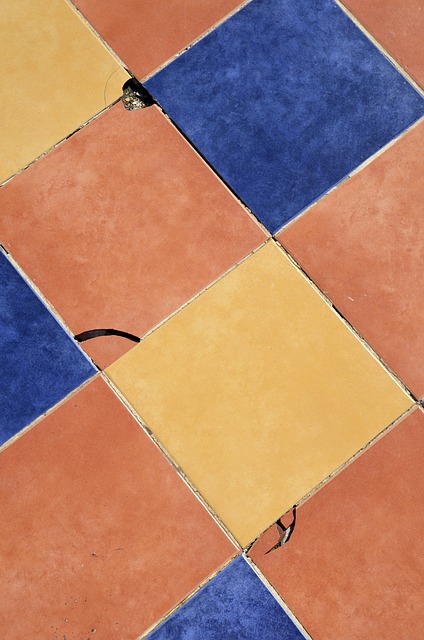While tile can be incredibly strong, it’s not unbreakable. So what causes tile to crack? There are actually quite a few different causes, and here are the most common.
Hard Impacts
One of the most frequent causes of broken tile on floors and countertops is when something is dropped on them. Objects which are hard, heavy, and dropped from higher up will cause the most damage.
Some types of natural stone flooring such as marble tiles may develop cracks in the surface of the tile but not crack completely. These are known as stun marks, which are actually caused by small explosions in the crystal structure of the stone from the impact.
Supporting Too Much Weight
Floor tile in general can support extremely heavy weights per square inch. That’s why it’s rare for tile to crack even while supporting heavy appliances such as fridges. However not all tile materials are made for all applications.
For this reason you’ll always want to check first that the tile material you are considering is suitable and rated for how you will be using it. Also DIY enthusiasts will need to make sure they don’t use wall tile on floors or countertops since it is too fragile and very likely to break.
Cracked Concrete
When tile is bonded directly to concrete and that concrete happens to crack so can the tile layer above. This is known as reflective cracking and often causes multiple tiles to crack.
When initially installing tile by using what’s known as a crack isolation membrane, you can protect floors from potential future cracks in the concrete.
The membrane is bonded to the concrete and the tile is bonded to the membrane. This allows the membrane to stretch and move with the concrete and prevents the tile cracking even if the concrete does.
Tiling Over Control Joints
A control joint is used in a concrete slab to help prevent random cracking. It allows the slab to crack in a straight line. Curling and movement of the concrete at the control joint is very common. And tiling directly over a control joint can therefore cause reflective cracking in the tiles above.
Tiling Before A Slab Has Cured
The concrete slab which tiles will be placed over needs the appropriate time to cure, before the tiles are installed. The length of time needed can depend on several factors such as the cement to sand ratio, particle size, water exposure, along with environmental factors.
A safe estimate is typically to wait about twenty eight days, although the longer the better. If you install your tiles before the slab has properly cured they could be damaged by the stress of the shrinkage of the concrete as it hydrates and the extra moisture evaporates.
Also the slab is more prone to cracking while curing which could result in reflective cracking as well.
Excessive Deflection
Because tile itself is stiff and inflexible it needs a surface below it which is rigid. Wooden flooring joists are what make up the base level of your floors and they help to keep your floors straight and supported.
However, when joists are spaced too far apart the forces of compression and tension can cause sagging in the floor. This is also known as excessive deflection. This lack of support under the rigid tiles will typically first cause cracking in the tile grout and ultimately cause the floor tile to crack too.
Low-Quality Tile
While it can be tempting don’t try to save too much money up front by purchasing second grade materials. This can lead to cracking later on down the road. And of course this can end up costing you more in the long run than if you had simply purchased quality materials.
Improper Tile Installation Techniques
When tiles are improperly installed it can lead to problems in the future. One common installation mistake is not using a flexible caulk to create expansion joints where the tile meets another material.
Sometimes grout is used instead and since it is inflexible it doesn’t allow movement between the two materials. And that can lead to cracked tiles and grout.
Another common installation mistake is not properly leveling out the thinset. This can cause empty spaces on the backing of the tile. And with no support in these hollow spots tiles they can be much more prone to break.
Now that you know what causes tile to crack, you can adequately assess the problem or help to prevent it. By sticking with quality materials, taking the time to install them correctly, or hiring only reputable professionals to do the job for you, you can help make sure your project is a success.
Click Here Now to start shopping for Tile!
